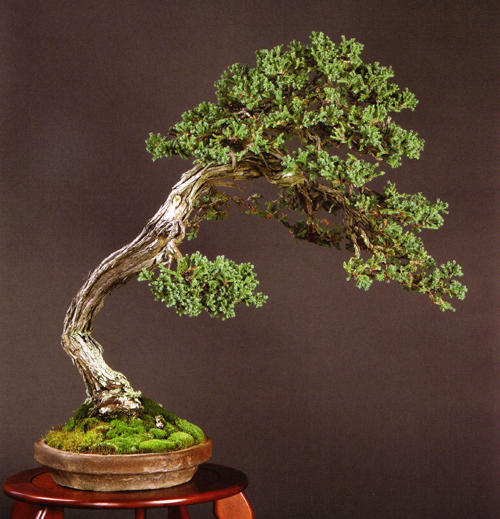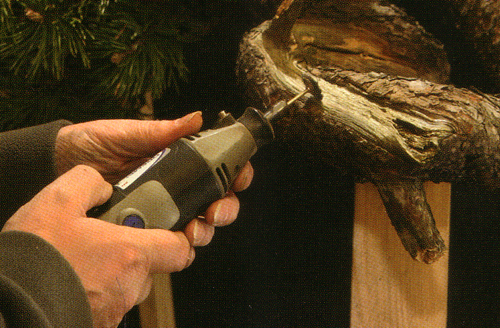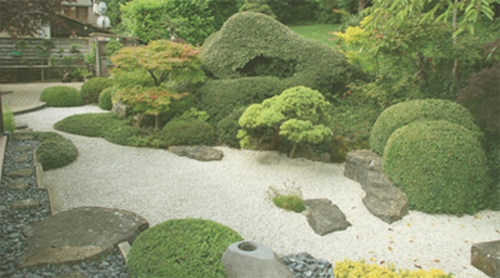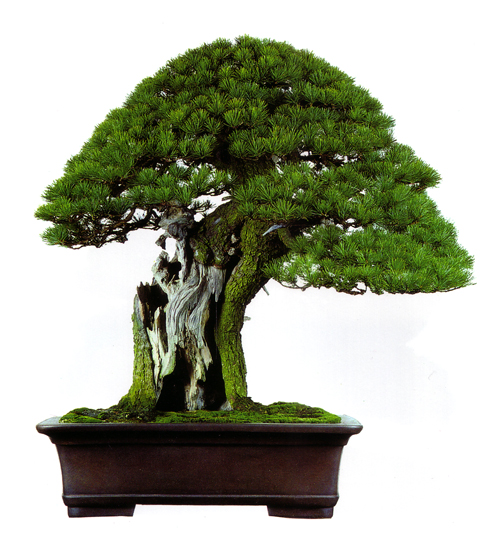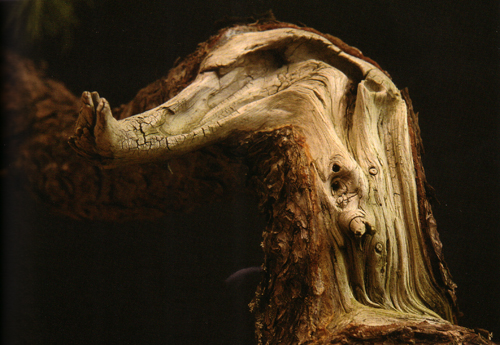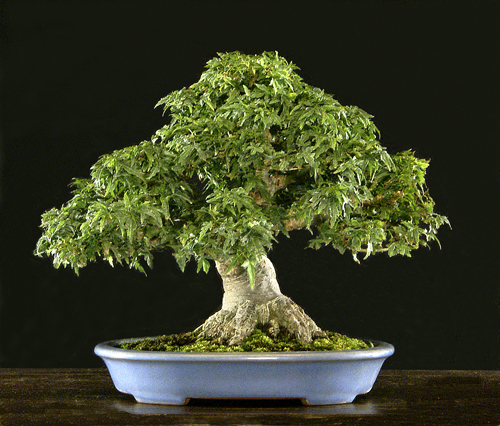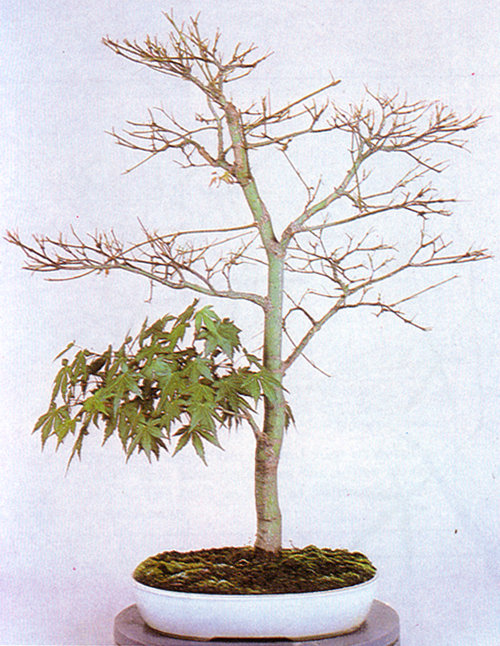
This Japanese maple (Acer palmatum) has been partially defoliated. The first branch is too small relative to the rest of the tree, so the purpose of the defoliation is to speed up the development of the first branch while slowing down the development of the rest of the tree. This works because energy flow decreases in areas that have been defoliated. Conversely, because the energy from the roots has to go somewhere, energy flow increases where leaves are left on. The photos in this post are from Bonsai Today issue 103 (out of print). The article that the photos are taken from is by Hiroshi Takeyama.
